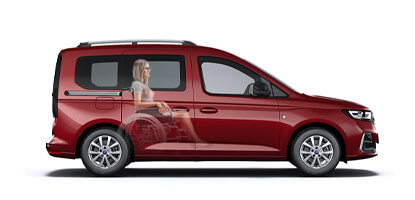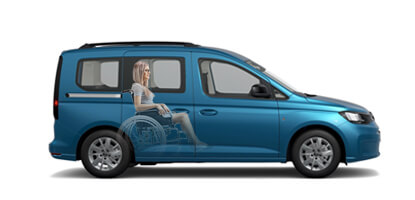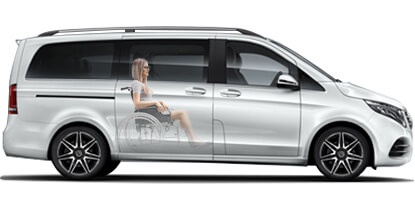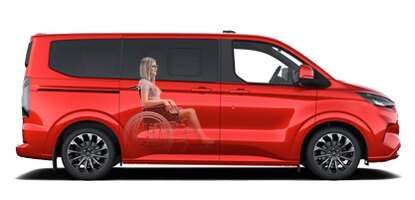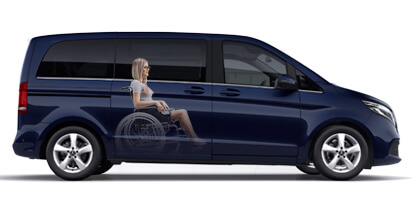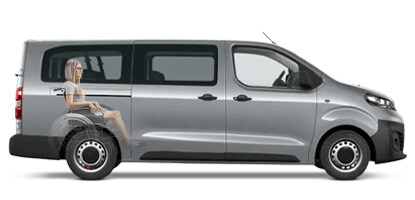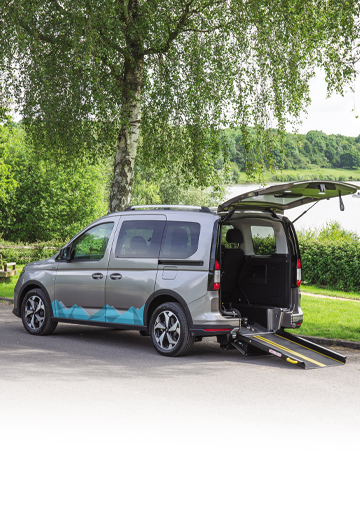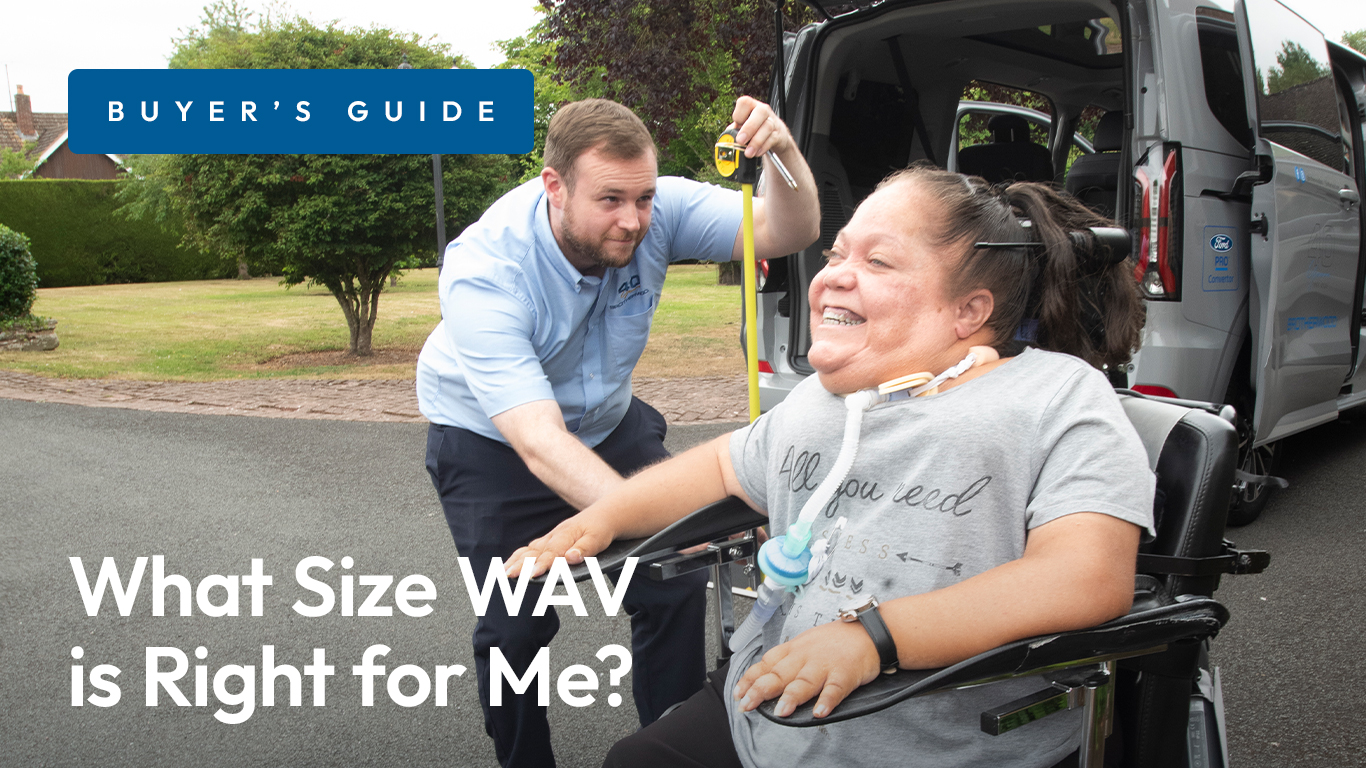When choosing a new Wheelchair Accessible Vehicle (WAV), it is critical to assess how much interior space you require to enable the wheelchair user to travel comfortably, with good visibility out of the windows and without feeling cramped. You’ll also need to consider the overall size of the vehicle for easy driving and parking, and ensure you have enough storage space for any equipment you might travel with.
How to Measure a Wheelchair
Accurately measuring your wheelchair and the dimensions of the seated wheelchair user are key to finding your perfect WAV. You’ll need a tape measure, and somewhere to write down your measurements for safe keeping.
The most important specifications to check are:
- The seated height of the wheelchair user;
- The eyeline of the wheelchair user;
- The ‘track’ (wheel to wheel) width of the wheelchair;
- The width and height of the armrests;
- The total length of the wheelchair including any protruding parts such as footplates or handles;
- The weight of the wheelchair.
By comparing these measurements to the internal dimensions of our wheelchair accessible vehicles, checking for adequate entry height and internal headroom, you can ensure that the wheelchair user can travel in comfort.
You can enter your measurements into our Needs Assessment Quiz to help us find your perfect match.
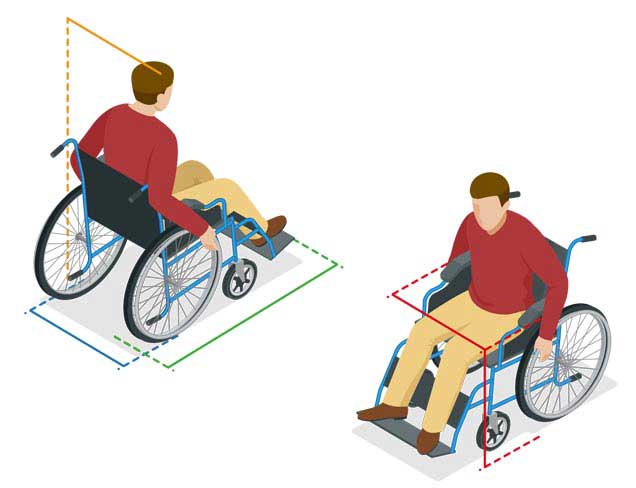
Seated Height
The seated height of the wheelchair user is the most critical aspect to finding a suitable WAV. You can find out more about how and why you should measure your seated height in this article.
Eyeline
Ensuring that the eyeline of the wheelchair user is below the top of the window line ensures good visibility out of the vehicle, and reduces the likelihood of travel sickness.
Finding the Weight of Your Wheelchair
It is vital to find the weight of both the wheelchair and wheelchair user, as a safety-tested wheelchair restraint system must be fitted to ensure passenger safety. You may be able to find the weight of your wheelchair on a label, or in the operator’s manual.
The wheelchair and the wheelchair user are secured by two different systems – the wheelchair restraints for the wheelchair, and a seatbelt for the occupant. So it’s best to note the weight of the wheelchair and wheelchair user as separate measurements.
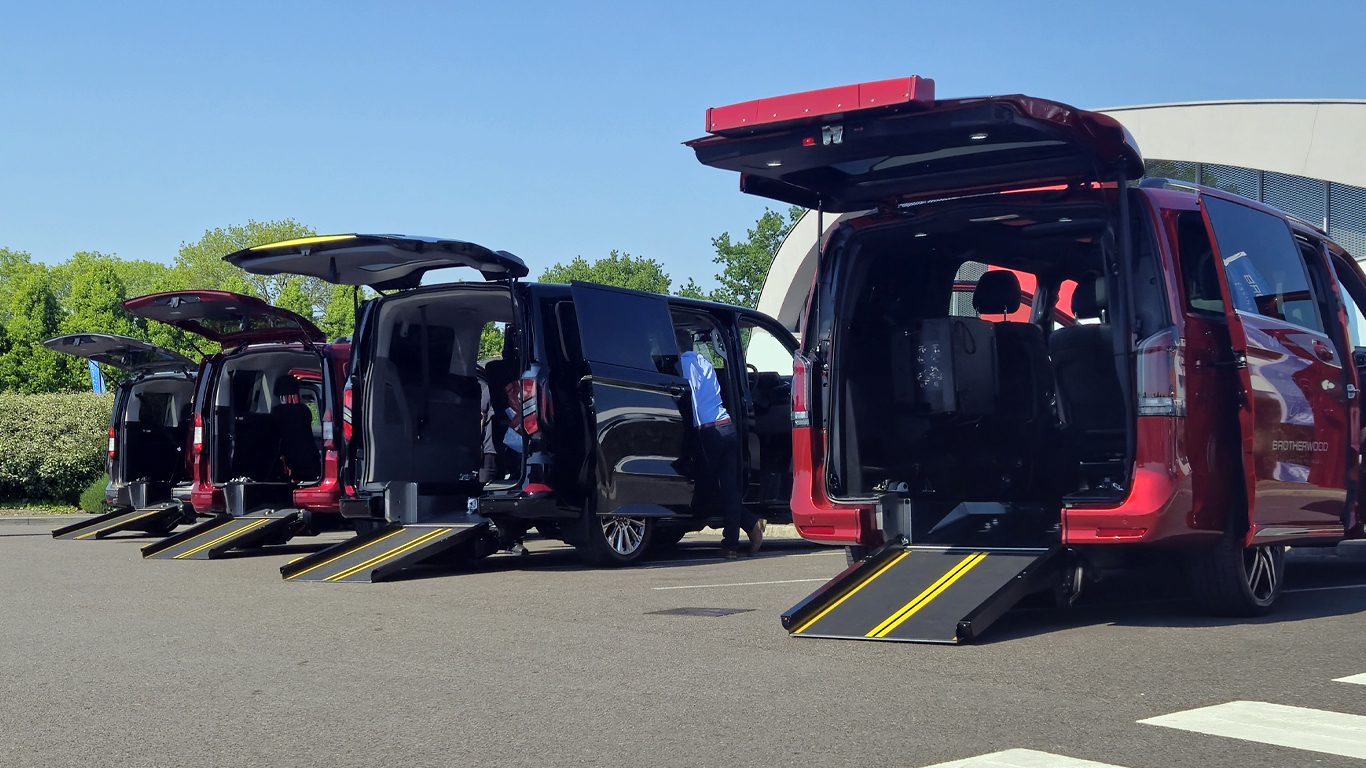
WAV Size Guide
Like any car purchase, when choosing a Wheelchair Accessible Vehicle you should consider which vehicle best suits your lifestyle and how you will use it. Not only does the vehicle need to offer suitable comfort, inclusion and safety for the wheelchair user, it should also suit the entire family’s lifestyle.
Small / Medium / Large WAVs
WAVs available on the Motability Scheme are grouped into Small, Medium-Small, Medium-Large, and Large, depending on their exterior size, and number of seats. However we recommend choosing a WAV based on the interior space required by the wheelchair user, as similar base vehicles are adapted in different ways by different convertors, and their actual capacities will vary.
Parking Your WAV
Your Wheelchair Accessible Vehicle will need to fit comfortably in your garage, driveway or parking space, and in any regular parking spaces (at the shops, or at school). Check that the adapted vehicle can easily be loaded and unloaded in all of these places. Check also for any height restrictions where you park, as some large WAVs may exceed 2.0 metres in height.
Driving Your WAV
A free home demonstration is a great opportunity to get used to driving your WAV. Everybody who will drive the wheelchair car should take a test drive, and check that it is suitable for your local roads. Smaller vehicles may feel more compact and easy to drive, but large WAVs can give a better view of the road with a raised driving position, and come with extra features such as reversing sensors and rear cameras to make parking easier.
Storage Solutions
Your WAV should have enough space or storage solutions for anything you need to travel with – mobility aids, luggage and additional equipment such as a ventilator or oxygen bottle. Our team of mobility experts can even suggest bespoke storage solutions for anything from bags of shopping to dogs.

